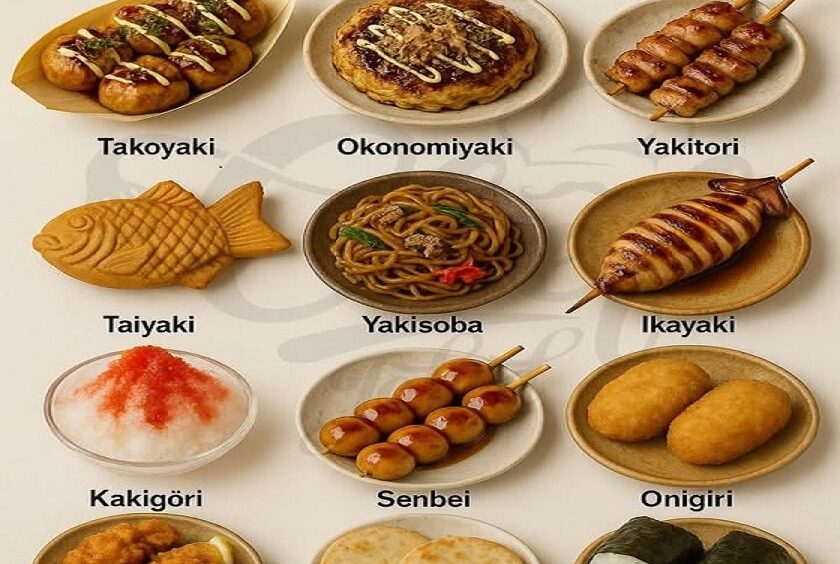Introduction:
Imagine strolling through the bustling streets of Japan, surrounded by the tantalizing aroma of sizzling skewers, fresh seafood, and sweet pastries. The vibrant colors of street food stalls, the hum of excited chatter, and the sizzling sounds of food being prepared fill the air, creating a sensory overload like no other. Japanese street food is more than just food; it’s an experience that captures the heart of Japan’s food culture. From savory to sweet, these bite-sized treasures offer a deep dive into Japan’s culinary diversity, making it an essential part of any trip or food adventure.
In Japan, street food plays a crucial role in daily life, from quick bites during work or school breaks to iconic festival foods that bring people together. This food culture dates back centuries, evolving with the tastes of the people while maintaining a connection to traditional flavors. Street food vendors, known as “yatai,” bring a variety of tasty dishes to life, showcasing regional specialties and giving locals and tourists alike a chance to savor authentic japanese street food flavors on the go.
In this article, we’ll explore 7 must-try Japanese street food flavors that showcase the uniqueness of Japan’s food scene. Each dish tells its own story and offers a special glimpse into the culture of this fascinating country. Whether you’re planning a trip to Japan or hoping to recreate these flavors at home, these 7 street foods will transport your taste buds straight to the heart of Japan.
So, let’s dive into the world of Japanese street food and discover the incredible flavors you’ll love to explore!
👉Takoyaki – The Savory Ball of Delight
Takoyaki is one of the most iconic Japanese street food dishes, and it’s an absolute must-try for anyone looking to explore Japan’s culinary culture. These delicious, bite-sized balls of savory goodness are made from a special batter filled with tender chunks of octopus. Cooked in a unique griddle pan with spherical indentations, takoyaki is crisp on the outside and soft and gooey on the inside. This popular street food captures the essence of Japanese street food by blending a perfect balance of flavors and textures.
Key Ingredients
The magic of takoyaki lies in its simple yet flavorful ingredients. The batter is made from flour, eggs, and dashi (a Japanese soup stock), creating a light and delicate texture that holds the octopus chunks perfectly in place. The key filling in each ball is a tender piece of octopus, which provides a slight chewiness and oceanic flavor.
Once cooked, takoyaki is topped with a variety of ingredients to elevate its taste. Bonito flakes, also known as katsuobushi, are sprinkled on top, adding a smoky, umami-rich depth. Takoyaki sauce, a sweet and savory blend of Worcestershire sauce and soy sauce, is generously drizzled over the crispy exterior. A final touch of mayonnaise and chopped green onions adds a creamy and fresh contrast to the rich flavors. These ingredients combine to create a delightful explosion of taste in every bite.
The Flavor Profile
When you take a bite of takoyaki, the initial crunch of the crispy outer layer gives way to a warm, gooey center, where the octopus mingles with the batter, creating an irresistible contrast of textures. The savory and umami-rich flavors of the octopus blend perfectly with the slightly sweet takoyaki sauce, making each bite a harmonious balance of flavors. The smoky taste from the bonito flakes and the creamy tang of mayonnaise round out the experience, making takoyaki a truly unforgettable Japanese street food delight.
Cultural Significance
Takoyaki hails from Osaka, Japan, where it was first created in the 1930s. Over time, this snack gained popularity across the entire country, becoming a beloved Japanese street food that can be found at festivals, food stalls, and even dedicated takoyaki shops. It’s commonly enjoyed by locals as a quick snack or a light meal, and it’s especially popular during festivals, where vendors often serve it fresh off the griddle. Takoyaki represents the fusion of comfort food and Japanese culinary tradition, capturing the warmth and hospitality of street food culture.
Where to Find Takoyaki
If you’re in Japan, finding authentic takoyaki is easy. It’s available at virtually every festival, and there are entire streets lined with takoyaki stalls during local events. Osaka is the birthplace of takoyaki, so you’ll find some of the best versions here, especially in districts like Dotonbori. Major cities like Tokyo, Kyoto, and Fukuoka also have takoyaki shops that serve freshly made balls. For a truly authentic experience, try visiting a local food market or street food area where takoyaki is served hot off the grill.
How to Make Takoyaki at Home
Making takoyaki at home is easier than it sounds! Here’s a simple recipe to bring this Japanese street food to your kitchen:
Ingredients:
- 1 cup of takoyaki flour (or substitute with all-purpose flour and dashi powder)
- 2 eggs
- 2 cups of dashi stock (or water)
- ½ cup of chopped octopus
- Takoyaki sauce, mayonnaise, bonito flakes, green onions, and pickled ginger for garnish
Instructions:
- Prepare the batter: Mix the takoyaki flour, eggs, and dashi stock together until smooth.
- Heat the takoyaki pan: Grease the takoyaki griddle and heat it over medium heat.
- Cook the takoyaki: Pour the batter into the molds, filling each one halfway. Add a piece of octopus in the center, then top it off with more batter.
- Turn and cook: Use skewers to turn the balls every few minutes, ensuring that all sides are golden brown and crispy.
- Serve: Once cooked, drizzle with takoyaki sauce, top with bonito flakes, mayonnaise, and green onions. Serve hot and enjoy!
Whether you’re in Japan or trying to recreate it at home, takoyaki is the perfect way to experience the soul of Japanese street food in every bite.
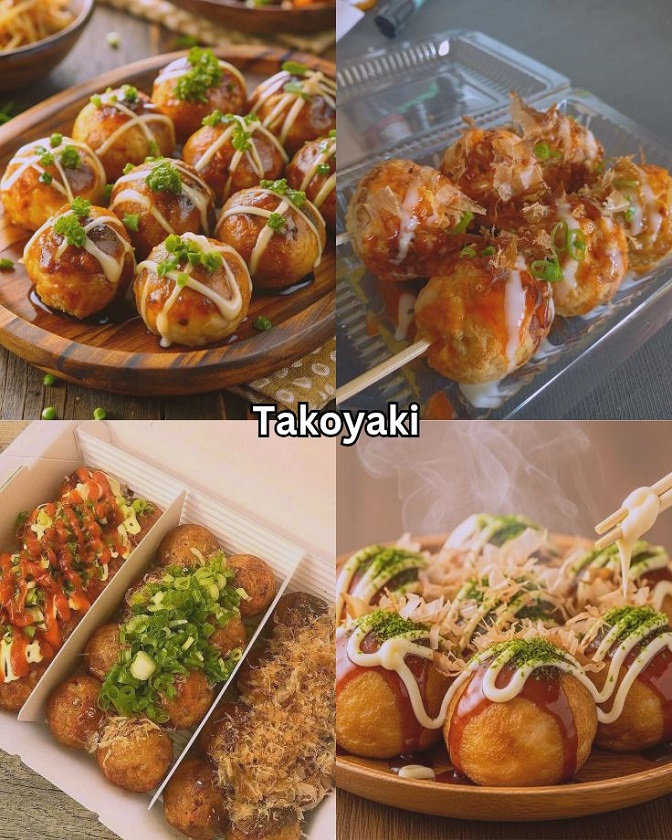
👉Okonomiyaki – The Savory Pancake
Okonomiyaki is a beloved and comforting dish that falls under the category of Japanese street food, and it’s often referred to as a savory pancake. What sets okonomiyaki apart from other pancakes is its hearty filling of vegetables, meat (like pork or seafood), and the signature toppings that transform it into a flavorful, satisfying meal. Whether enjoyed as a snack on the streets of Japan or as a hearty dish in a restaurant, okonomiyaki is a perfect reflection of Japan’s creative approach to food. It’s rich, savory, and versatile, offering endless combinations based on personal taste and regional influences.
Key Ingredients
The key ingredients in okonomiyaki create a perfect harmony of textures and flavors. The base of the pancake is made from flour, eggs, and water (sometimes dashi stock), giving it a soft, fluffy texture. Cabbage is the primary vegetable and is finely chopped, giving the pancake a satisfying crunch.
Meat is usually added for extra flavor, with pork belly being the most common choice, though seafood like shrimp or squid is also popular. The pancake is then cooked on a hot griddle, creating a crisp exterior while maintaining a tender and flavorful interior. Once cooked, the pancake is topped with a generous drizzle of okonomiyaki sauce (a tangy, sweet, and savory sauce similar to Worcestershire sauce), mayonnaise, and a sprinkle of bonito flakes and seaweed (a common topping known as aonori). The result is a mouthwatering, savory dish that’s incredibly satisfying and packed with flavor.
The Flavor Profile
The flavor profile of okonomiyaki is a delightful mix of savory, sweet, and umami. The pancake itself is rich and slightly tangy from the sauce, while the cabbage adds a satisfying crunch. The pork or seafood contributes a deep, savory flavor, while the okonomiyaki sauce provides a perfect balance of sweetness and tang. The mayonnaise adds a creamy touch that complements the richness of the pancake, and the bonito flakes offer a smoky, umami-packed finish. The combination of these ingredients creates a truly balanced flavor experience, making okonomiyaki one of the most comforting and satisfying Japanese street food dishes you can try.
Cultural Significance
Okonomiyaki has strong roots in both Osaka and Hiroshima, but the dish differs slightly between the two regions. The Osaka-style okonomiyaki is the most well-known and is made by mixing all the ingredients together before cooking it on a griddle. Hiroshima-style okonomiyaki, on the other hand, layers the ingredients rather than mixing them and includes yakisoba (fried noodles) inside, adding a unique twist to the dish. Both styles are enjoyed across Japan and are a staple in Japanese street food culture.
Okonomiyaki also has a cultural significance beyond being just a delicious meal. It’s often enjoyed during family gatherings, at festivals, or in specialized okonomiyaki restaurants called “okonomiyaki-ya,” where diners can even cook the pancake themselves at the table. Its versatility and ability to cater to different tastes and preferences have made it a beloved dish, with variations found all over Japan.
Where to Find Okonomiyaki
To experience authentic okonomiyaki, visiting Japan is a must. Osaka is the birthplace of this savory pancake, and it’s here you’ll find the most iconic versions of the dish, especially in the bustling district of Dotonbori. There are also several okonomiyaki-ya where you can cook your pancake on a griddle at your table. Hiroshima also offers its own unique style of okonomiyaki, particularly in the Hiroshima City area, where you can enjoy the layered version of the dish. If you’re unable to visit Japan, Japanese street food festivals or specialized restaurants abroad may offer a similar experience.
Making Okonomiyaki at Home
Making okonomiyaki at home is easy and rewarding. Here’s a simple recipe for you to recreate this Japanese street food in your own kitchen:
Ingredients:
- 1 cup of flour
- 1/2 cup of dashi stock (or water)
- 2 eggs
- 2 cups of finely chopped cabbage
- 1/2 cup of sliced pork belly (or shrimp)
- Okonomiyaki sauce and mayonnaise for topping
- Bonito flakes and aonori (seaweed) for garnish
Instructions:
- Prepare the batter: In a bowl, mix the flour, dashi stock, and eggs together to form a smooth batter.
- Add the cabbage and pork: Stir the chopped cabbage and sliced pork belly into the batter until well combined.
- Cook the okonomiyaki: Heat a non-stick pan or griddle over medium heat and lightly grease it. Pour the batter onto the pan to form a round pancake. Cook until cooked through and golden brown, about 4–5 minutes per side.
- Top and serve: Drizzle okonomiyaki sauce and mayonnaise over the pancake. Sprinkle bonito flakes and aonori on top. Serve hot and enjoy!
Whether you’re enjoying okonomiyaki at a bustling street stall in Japan or cooking it at home, this Japanese street food is sure to bring comfort and joy with every bite.
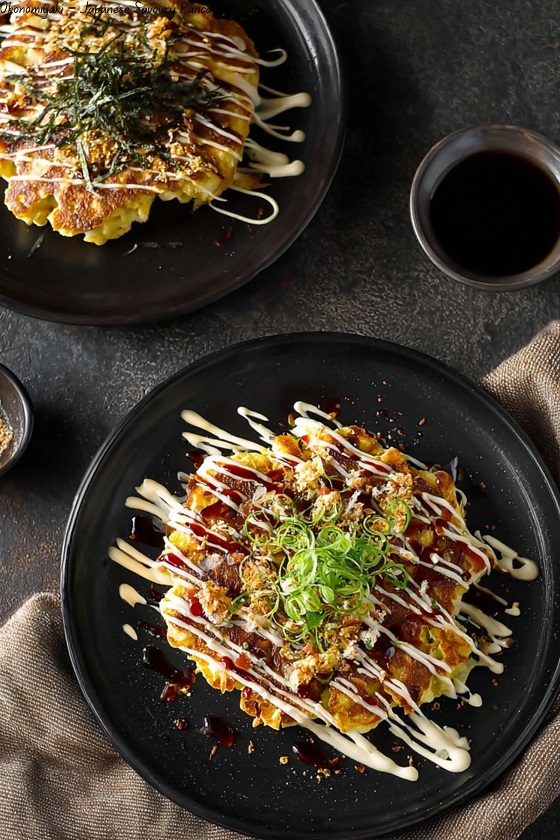
👉Taiyaki – The Sweet Fish-Shaped Pastry
Taiyaki is a delicious Japanese street food that combines the charm of a crispy pastry with the comfort of a sweet, gooey filling. Shaped like a fish, this pastry is typically filled with traditional sweet red bean paste, although you can also find fillings such as custard, chocolate, and even sweet potato. The delightful shape, combined with the rich fillings, makes taiyaki a perfect snack that not only satisfies your sweet tooth but also offers a unique glimpse into Japan’s vibrant food culture.
Key Ingredients
The beauty of taiyaki lies in its simple yet flavorful ingredients. The outer shell of taiyaki is made from a batter consisting of flour, sugar, eggs, and baking powder, resulting in a golden, crispy texture that contrasts beautifully with the soft, warm filling. Traditionally, taiyaki is filled with sweet red bean paste (anko), made from adzuki beans that are boiled, sweetened, and mashed into a smooth paste. For those who prefer a different taste, custard and chocolate fillings are also popular, offering a creamier, sweeter alternative.
The combination of the crisp batter and the rich, warm fillings creates a truly satisfying bite. The outer shell provides a light, slightly sweet crunch, while the filling—whether it’s earthy and sweet red bean paste or creamy custard—adds depth and contrast.
The Flavor Profile
Taiyaki has a flavor profile that beautifully balances sweetness and texture. The crispy outer layer offers a light, slightly sweet flavor that’s perfect for complementing the rich, savory filling inside. If filled with sweet red bean paste, the earthy sweetness of the beans contrasts with the crisp batter. In the custard or chocolate versions, the smooth, creamy filling adds a comforting sweetness that’s balanced by the light crunch of the outer shell. The texture contrast between the crispy shell and the soft filling is a hallmark of this Japanese street food, making each bite an enjoyable experience.
Cultural Significance
In the culture of Japanese street cuisine, taiyaki has a unique place. The fish shape is not just a whimsical design; it has deep cultural significance. The fish used for taiyaki is typically a tai (red snapper), which is a symbol of good fortune and prosperity in japanese street food culture. This connection to good luck makes taiyaki a popular treat during festivals and special occasions, particularly during the New Year.
At japanese street food festivals, taiyaki is often sold in stalls, with vendors cooking it fresh on the spot. Its symbolism, along with its warm and comforting nature, has made it a staple of the festival season, with people from all walks of life enjoying the crispy, sweet snack.
Where to Find Taiyaki
Taiyaki can be found all over Japan, especially at street food stalls during festivals or in busy shopping areas. Cities like Tokyo and Osaka have numerous vendors selling taiyaki, and it’s especially popular during Hanami (cherry blossom viewing) in spring or during the New Year season. Asakusa in Tokyo, with its historic temples and vibrant food scene, is a great place to find authentic taiyaki. Dotonbori in Osaka is another iconic area known for street food, where you’ll find fresh, hot taiyaki being sold from carts.
During festivals like the Tanabata festival or local matsuri (Japanese festivals), taiyaki vendors set up stalls in busy streets, creating a lively atmosphere where you can enjoy this delicious treat along with other Japanese street foods. Whether it’s the warmth of summer or the chill of winter, taiyaki is a comforting snack enjoyed year-round.
How to Make Taiyaki at Home
Making taiyaki at home is an easy and fun way to experience this classic Japanese street food without having to travel to Japan. With a taiyaki mold, you can replicate this delightful pastry in your kitchen. Here is a basic recipe that you can try:
Ingredients:
- 1 ½ cups of all-purpose flour
- 2 tbsp of sugar
- 1 ½ tsp of baking powder
- 1 egg
- 1 ¼ cups of milk
- ¼ tsp of vanilla extract (optional)
- Sweet red bean paste (anko), custard, or chocolate for filling
Instructions:
- Get the batter ready: Mix the flour, baking powder, and sugar in a bowl. In another bowl, combine the egg, milk, and vanilla extract. Mix until smooth after adding the wet ingredients to the dry ingredients.
- The taiyaki mold should be heated to medium heat. Apply a thin layer of oil or butter on the mold.
- Fill the mold: Pour a little batter into the mold, just enough to cover the base. Add a generous spoonful of your chosen filling (red bean paste, custard, or chocolate). Top with more batter until the filling is completely covered.
- Cook the taiyaki: Close the mold and cook for about 3-4 minutes on each side, or until the pastry turns golden brown and crispy.
- Serve: Once the taiyaki is cooked, carefully remove it from the mold and allow it to cool slightly before serving. Enjoy while it’s still warm!
Making taiyaki at home brings the magic of Japanese street food right to your kitchen. Whether you enjoy the traditional red bean filling or get creative with custard or chocolate, taiyaki is a treat that’s fun to make and even more fun to eat.

👉Korokke – Japanese Croquettes
Korokke, Japan’s version of croquettes, is a beloved Japanese street food that combines the crispy exterior of a golden-brown breaded crust with a soft, savory filling. These deep-fried patties, typically made with mashed potatoes or ground meat, offer a comforting snack that’s easy to eat on the go. Whether enjoyed as a side dish in a bento box, served as a quick snack, or found at food stalls during festivals, korokke has secured its place as a staple in Japanese cuisine.
Key Ingredients
The two main types of korokke are potato korokke and meat korokke, with both versions featuring a delicious filling encased in a crispy breadcrumb coating.
- Mashed Potatoes: For potato korokke, mashed potatoes are the primary filling. They’re often mixed with ingredients like onions, carrots, and sometimes ground meat to add flavor.
- Ground Meat: Meat korokke usually features ground beef or pork, which is seasoned and mixed with vegetables such as onions and sometimes even mushrooms or cabbage.
- Breadcrumbs: After forming the patties, korokke is coated in panko breadcrumbs, which gives it a light, crunchy crust when deep-fried.
- Seasoning: The filling is often seasoned with salt, pepper, and Worcestershire sauce, adding layers of savory flavors.
The beauty of korokke is its versatility. You can adjust the fillings based on your preferences, and both versions offer a rich, satisfying taste that’s hard to resist.
The Flavor Profile
The flavor of korokke is all about contrast and balance. The crispy exterior provides a satisfying crunch with each bite, while the soft, savory filling inside contrasts beautifully. For potato korokke, the mashed potatoes are creamy, with subtle sweetness from the vegetables and a savory depth from the seasoning. Meat korokke, on the other hand, features a hearty filling with savory meat flavors, making it more substantial and filling. The crunchy panko coating adds texture and a slight nuttiness, making each bite a delightful experience.
Korokke is typically served with tonkatsu sauce or ketchup for dipping, adding an extra layer of flavor that complements its crispy, rich filling. This combination of flavors makes korokke one of the most popular Japanese street food options for a satisfying snack or light meal.
Cultural Significance
Korokke has become an integral part of japanese street food culture. Often eaten as a quick snack or a light meal, it’s especially popular among schoolchildren and busy professionals looking for a tasty, portable meal. Korokke is commonly found in convenience stores, where it’s often sold as a quick bite for those on the go. It’s also a popular item in bento boxes, serving as an easy and satisfying addition to a lunch.
In addition to being an everyday food item, korokke is often served at street stalls during festivals, making it a recognizable Japanese street food during celebrations. It’s one of those dishes that connects generations, as it’s often a comfort food enjoyed by both children and adults alike.
Korokke has also been adopted in other parts of the world, especially in places where Japanese expatriates live. It serves as a bridge between Japanese home-cooked comfort food and the fast-paced, convenience-driven culture of street food.
Where to Find Korokke
In Japan, korokke can be found at nearly every convenience store and supermarket, often pre-made and ready to be quickly heated. It’s also sold in specialty shops and street food stalls, particularly in busy urban areas like Tokyo and Osaka. At these stalls, you can find freshly fried korokke, often served piping hot and crispy, right on the street. Many department stores and grocery markets have dedicated sections for fresh korokke, where they prepare it daily to be served to customers.
For an authentic experience, you can also visit korokke specialty shops, where the patties are made fresh to order and often customized to suit the customer’s preference. These shops often serve meat korokke with a side of tonkatsu sauce, making for an indulgent treat.
How to Make Korokke at Home
Making korokke at home is a fun and simple way to enjoy this classic Japanese street food. Here’s a basic recipe for making your own potato korokke:
Ingredients:
- 2 large potatoes, peeled and boiled
- 1/2 cup of ground beef or pork (optional)
- 1/4 cup of chopped onions
- 1/4 cup of breadcrumbs (panko)
- Salt and pepper to taste
- 1/4 cup of flour
- 1 egg, beaten
- Tonkatsu sauce or ketchup (for serving)
Instructions:
- Prepare the filling: Mash the boiled potatoes until smooth. In a pan, sauté the chopped onions and ground meat (if using) until cooked through. Add the mashed potatoes to the sautéed mixture. Season with salt and pepper to taste.
- Form the patties: Take a small portion of the mixture and form it into small, round patties.
- Bread the patties: Dip each patty into flour, then into the beaten egg, and finally coat it with breadcrumbs.
- Fry the korokke: Heat oil in a frying pan or deep fryer over medium heat. Fry the korokke in batches for about 3-4 minutes, or until golden brown and crispy on all sides.
- Serve: Drain the fried korokke on paper towels to remove excess oil. Serve with tonkatsu sauce or ketchup.
Whether enjoyed as a quick snack, a side dish, or a filling meal, korokke is a classic Japanese street food that’s easy to prepare and even easier to enjoy. Try making it at home to experience the comforting flavors of this iconic treat!
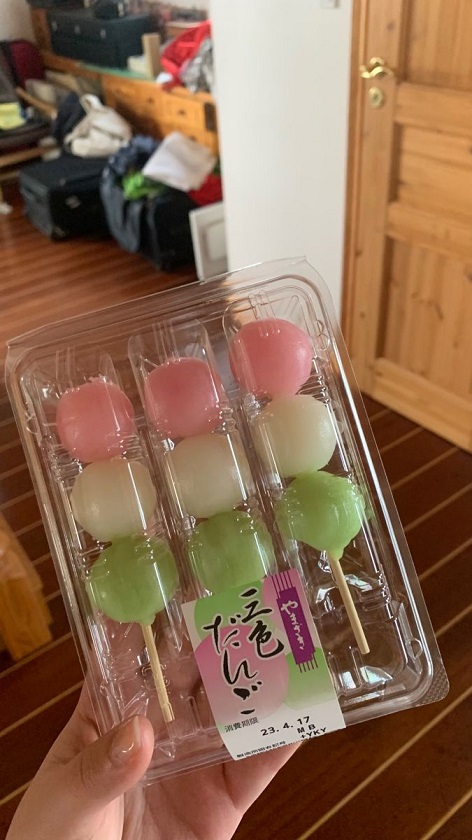
👉Yaki Imo – Roasted Sweet Potatoes
Yaki imo, or roasted sweet potatoes, is a simple yet beloved Japanese street food that captures the essence of comfort and warmth. In Japan, this snack is a favorite, particularly during the colder months of autumn and winter. The sweet, earthy flavor and warm, soft texture of yaki imo provide the perfect snack to enjoy while walking through chilly streets or taking a break from daily activities. Whether enjoyed from a food stall or purchased from a vendor, yaki imo is a quintessential Japanese street food that embodies the simplicity and beauty of japanese street food culture.
Key Ingredients
The key ingredient in yaki imo is, of course, the sweet potato. The most commonly used variety in Japan is called satsumaimo, which has a purple or reddish skin and a creamy, golden-yellow flesh. Satsumaimo are particularly sweet when roasted, with their flavor becoming more pronounced and caramelized as they cook.
Unlike other varieties of sweet potatoes found in the West, satsumaimo have a naturally sweet and rich flavor that makes them perfect for roasting. Their flesh becomes tender and soft, making them a delightful treat to enjoy on a cold day. Vendors often use these sweet potatoes because they develop a wonderfully sweet taste when roasted over an open flame or in a traditional oven, which enhances their already delicious flavor profile.
The Flavor Profile
The flavor of yaki imo is simple but incredibly comforting. When roasted, the satsumaimo becomes naturally sweet, with a slight caramelized edge, giving each bite a depth of flavor. The soft, velvety texture of the roasted sweet potato contrasts beautifully with its subtly crunchy skin. There’s no need for additional toppings or seasonings, as the natural sweetness of the potato shines through, making it the perfect snack for those craving something both healthy and satisfying.
The warmth of the roasted sweet potato is particularly comforting during the colder months, as the hot, soft flesh of yaki imo can instantly warm you up. The balance of sweetness and earthiness makes it an ideal snack for anyone who enjoys naturally sweet foods that are hearty but not overwhelming.
Cultural Significance
Yaki imo holds a special place in japanese street food culture, especially during the autumn and winter months. During these seasons, yaki imo vendors can be found in various parts of Japan, particularly in parks, near busy shopping districts, and along streets. These vendors often sell yaki imo from trucks or small carts, with the sweet smell of roasting sweet potatoes filling the air.
In fact, many yaki imo trucks play a distinct melodic tune to attract customers, creating a nostalgic, almost festive atmosphere. The sound of the truck’s jingle is often associated with childhood memories, evoking feelings of warmth and comfort. For many Japanese people, the sound of a yaki imo truck passing by can bring back fond memories of buying hot, roasted sweet potatoes during the colder months.
Yaki imo also has a connection to Japanese street food traditions, as it embodies the concept of seasonal eating. In Japan, food is often enjoyed according to the season, and yaki imo is a quintessential winter treat. It provides not only nourishment but also a way to embrace the seasonality of food, which is a significant aspect of Japanese culinary culture.
Where to Find Yaki Imo
In Japan, yaki imo can be found in many locations during the cooler months, especially in autumn and winter. You’ll often hear the distinct jingle of a yaki imo truck as it drives through neighborhoods, selling freshly roasted sweet potatoes. These trucks are commonly seen in busy districts, residential areas, and near parks, particularly in cities like Tokyo and Osaka.
Aside from food trucks, yaki imo is also sold at local markets and specialty shops that focus on seasonal produce. If you visit Japan during the autumn or winter seasons, you’ll find yaki imo being sold in places like Shibuya or Shinjuku in Tokyo, where vendors line the streets offering this warm, comforting snack. Some supermarkets and department stores also have designated areas where you can buy freshly roasted sweet potatoes.
For those looking for a more traditional experience, you might also find yaki imo vendors at local festivals, where they’re sold alongside other seasonal treats. These sweet potatoes are often roasted to perfection, giving them a wonderful smoky flavor that adds to their appeal.
How to Make Yaki Imo at Home
If you can’t make it to Japan to enjoy this popular Japanese street food, you can easily recreate yaki imo at home. Roasting sweet potatoes is simple, and with a bit of patience, you can enjoy this warm, sweet snack just like you would in Japan.
Ingredients:
- 2-3 satsumaimo (Japanese sweet potatoes)
- Optional: a pinch of salt (for enhanced flavor)
Instructions:
- Prepare the potatoes: Wash the sweet potatoes thoroughly to remove any dirt. The skins offer texture and flavor, so leave them on.
- Roast the potatoes: There are a couple of ways to roast sweet potatoes. For the best results, wrap the potatoes in aluminum foil and bake them in a preheated oven at 375°F (190°C) for about 1 hour to 1 hour and 15 minutes. The size of the sweet potatoes will determine the precise time. You can also roast them directly on an oven rack for a more caramelized, crispy skin.
- Check for doneness: The sweet potatoes are done when they feel soft and squishy to the touch, and the skin has become slightly darkened. You can test them with a fork to check for tenderness.
- Serve: Once roasted, allow the yaki imo to cool slightly. Peel the skin and enjoy the warm, soft, and sweet interior.
Yaki imo is a simple yet deeply satisfying Japanese street food that brings comfort and joy with every bite. Whether you’re in Japan enjoying it from a food stall or roasting it at home, this seasonal treat is the perfect snack to enjoy during the colder months.
Dango: Skewered Rice Dumplings
Dango
One of the beloved staples of Japanese street food, dango is a traditional treat made of skewered rice dumplings that are often served with a savory-sweet soy sauce glaze. Unlike many other japanese street food snacks, dango offers a satisfying chewiness and a balanced flavor profile, making it a perfect on-the-go food for street vendors. The rice dumplings are often grilled, and once cooked, they are coated in a flavorful sauce, resulting in a snack that blends savory and sweet in the most delightful way.
Types of Dango
Dango comes in various styles, with each type having its own unique charm. One of the most popular varieties is Mitarashi dango, which is coated in a sweet soy sauce glaze. The sauce is both sweet and savory, creating a deep, rich flavor that pairs perfectly with the chewy rice dumplings. Mitarashi dango is widely enjoyed and can be found at many Japanese street food stalls across the country.
Another famous variety is Hanami dango, traditionally eaten during the cherry blossom season in spring. These dumplings are often made in three different colors – pink, white, and green – symbolizing the beauty of the cherry blossoms. The colors are not just for aesthetic appeal but also add a hint of flavor, with the pink representing sweet, the white being neutral, and the green offering a subtle flavor of mugwort. This type of dango is not just about taste, but also about celebrating Japan’s seasonal beauty, making it an iconic Japanese street food during festivals.
Cultural Significance
Dango is deeply embedded in japanese street food culture, especially as a symbol of various festivals. During springtime, Japanese street food stalls filled with Hanami dango are a common sight around parks, where families and friends gather to enjoy the cherry blossoms. Dango is also served at other festivals and celebratory occasions throughout the year, linking it to traditional Japanese customs. Its simple yet satisfying nature reflects the Japanese approach to food: a focus on seasonal ingredients and the beauty of nature.
In Japan, dango is also seen as a symbol of family and unity. The skewered dumplings are often shared among loved ones, reinforcing the importance of community and connection. Whether eaten in a bustling market or during a quiet moment at home, dango connects people to both the past and present, making it a favorite Japanese street food that transcends generations.
Flavor and Texture
The experience of eating dango is as much about texture as it is about taste. The rice dumplings themselves are chewy and dense, providing a satisfying bite with each skewer. As you sink your teeth into the dumpling, you first experience the chewy, almost sticky texture of the rice, followed by the burst of flavor from the sauce. The sweet soy glaze, typically made with soy sauce, sugar, and mirin, brings a perfect balance of saltiness and sweetness, coating the dumplings with each delicious bite.
Whether you’re enjoying Mitarashi dango or Hanami dango, the combination of the chewy rice and the sauce creates a satisfying contrast of flavors that is deeply comforting. This balance of savory and sweet is one of the key reasons why dango remains a top choice for Japanese street food lovers.
Why It’s a Favorite
What makes dango such a favorite in the realm of Japanese street food is its simplicity. It’s easy to eat, satisfying, and full of flavor. The ease of preparation, combined with its versatility in terms of flavor and presentation, makes it a go-to snack for anyone exploring the street food culture of Japan. Additionally, its affordability makes it accessible for almost anyone walking through the vibrant streets of Japan.
Its widespread popularity can also be attributed to the fact that dango is not just a food – it’s an experience. Whether you’re enjoying it on a quiet afternoon during cherry blossom season or grabbing a skewer from a street vendor while navigating through a busy market, dango is much more than a treat. It’s a piece of japanese street food history and culture that captures the essence of Japanese street food in every chewy bite.
Dango’s charm lies in its simplicity and versatility, making it a food that transcends time and trends. It’s a testament to the fact that some of the best Japanese street food experiences come from the most straightforward yet delightful dishes.
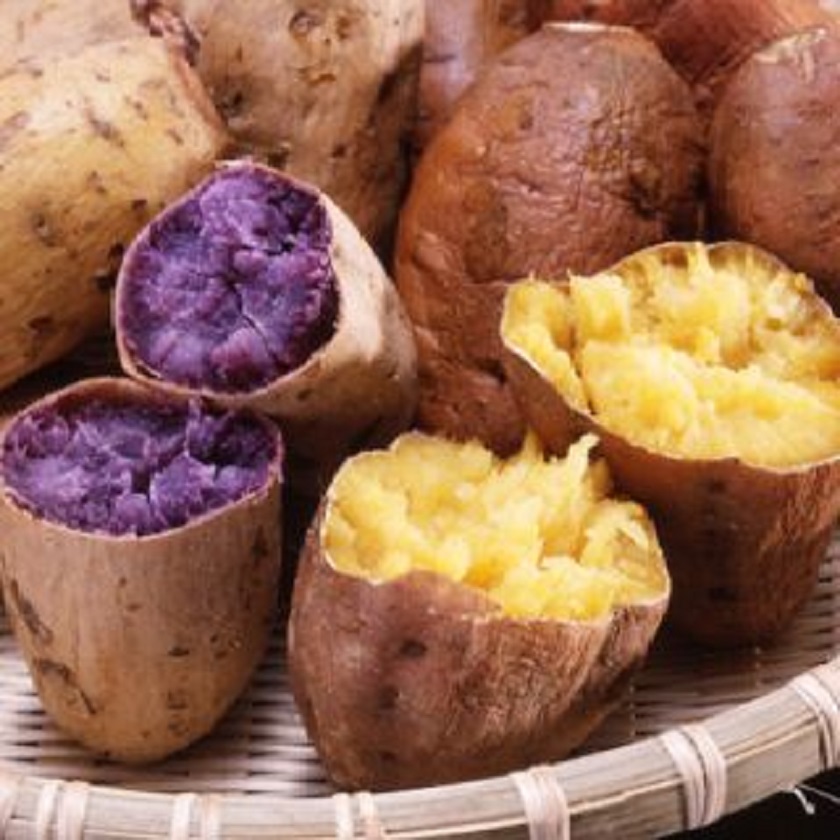
👉Kakigori: Shaved Ice to Beat the Heat
What is Kakigori?
Kakigori is a beloved Japanese street food that serves as the ultimate refreshment during Japan’s hot and humid summer months. Made from finely shaved ice, it is topped with a variety of flavored syrups, transforming a simple block of ice into a cooling, colorful treat. The texture of kakigori is much finer than typical shaved ice, which allows the syrup to permeate every layer, making each bite a burst of flavor.
Popular at summer festivals, street stalls, and parks, kakigori is a fun and nostalgic summer indulgence, loved by people of all ages across Japan. Whether you are strolling through a lively street market or cooling off during a summer festival, kakigori is an essential Japanese street food experience.
Varieties and Flavors
One of the reasons kakigori is so beloved is the endless variety of flavors it offers. While the classic syrup flavor is often strawberry or melon, there are many more intriguing options available depending on where you are in Japan. Matcha kakigori, made with finely powdered green tea, is particularly popular and adds a slightly bitter contrast to the sweetness of the syrup. For those who prefer a fruity taste, lemon, peach, and blueberry syrups are also common, each providing a vibrant and refreshing option.
In addition to these fruity and matcha options, regional variations can be found throughout Japan. Some stalls even offer more adventurous flavors like sweet red bean (anko) or sakura (cherry blossom), adding a unique twist to the classic ice dessert. The versatility of flavors makes kakigori an exciting Japanese street food that invites you to explore new taste experiences while keeping cool under the summer sun.
Toppings and Additions
Kakigori is often served with a variety of toppings, which add extra flavor and texture to the shaved ice. A popular addition is condensed milk, which is drizzled on top of the ice, creating a creamy, sweet contrast to the ice’s chilliness. Another favorite topping is azuki beans – sweet red beans that pair wonderfully with the cold ice, offering a chewy texture and slight earthiness that balances the sweetness of the syrup.
Some vendors also add mochi, the chewy rice cakes that are a staple in Japanese sweets, further enhancing the texture and flavor. These additions not only make kakigori more delicious but also give it a visual appeal with its colorful and layered presentation. For those with a sweet tooth, additional treats such as fruit chunks, jelly, or even candy may be added, creating a customized dessert that fits each person’s taste preferences. The choice of toppings is yet another reason why kakigori is a cherished Japanese street food, offering something for everyone.
Cultural Popularity
Kakigori is more than just a refreshing treat; it’s a symbol of summer in Japan. It is closely associated with Japanese summer festivals (matsuri), where festival-goers can enjoy this icy delight while participating in fireworks displays, traditional dances, and lively festivities. Kakigori has become a staple at these festivals, often served in decorative paper cups or cones, evoking nostalgic memories of childhood summers spent at matsuri.
In addition to festivals, kakigori is also a common feature in Japanese street food stalls throughout the summer months. The sound of the ice being shaved and the sweet aroma of the syrups wafting through the air instantly transports people to the carefree days of summer. Beyond its role in festivals, kakigori is an essential part of the japanese street food cultural experience, often enjoyed at home or shared with friends and family as a way to beat the heat.
Why You’ll Love It
What makes kakigori so irresistible is its refreshing nature, providing a much-needed cooling escape on sweltering summer days. Its fine, fluffy texture combined with the rich, sweet syrup offers a satisfying and enjoyable experience with every spoonful. Whether you’re enjoying a classic strawberry flavor or a unique regional twist, kakigori offers endless ways to enjoy a traditional Japanese street food while beating the heat.
The versatility of this shaved ice dessert ensures that there’s a flavor combination to suit everyone’s palate, from fruity and sweet to earthy and matcha-flavored. Its cultural significance further enhances the experience, making it not just a food but a sensory journey into the heart of Japanese summer traditions. If you’re exploring Japan during the hot months, kakigori is a must-try treat that perfectly encapsulates the cool, refreshing essence of Japanese street food.
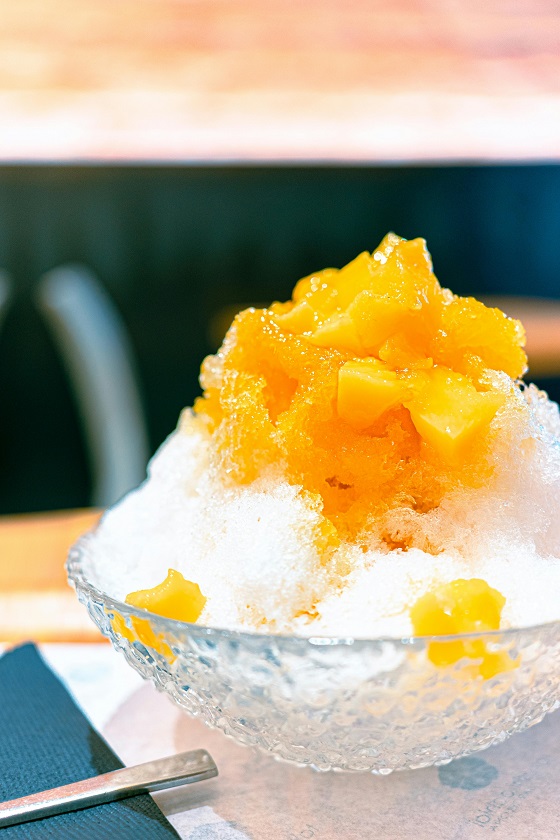
Conclusion
In this journey through the world of Japanese street food, we’ve explored seven incredible flavors that showcase the diverse and delicious offerings found on the streets of Japan. From the savory, bite-sized goodness of takoyaki, packed with octopus and flavor, to the sweet, chewy experience of dango, skewered rice dumplings drenched in savory-sweet sauces, each dish reflects the heart of Japan’s street food culture. We’ve also delved into the crispy delights of korokke, the warmth and nostalgia of yaki imo, and the rich variety found in kakigori, Japan’s iconic shaved ice dessert.
Other favorites like okonomiyaki, a savory pancake full of flavor and tradition, and taiyaki, a fish-shaped pastry filled with delicious fillings, further emphasize the incredible variety that Japanese street food offers. Whether you’re in the mood for something savory or sweet, there’s a perfect treat waiting for you at any corner in Japan.
Japanese street food is much more than just food—it’s an experience. These dishes are part of Japan’s cultural fabric, offering a chance to connect with local traditions, flavors, and culinary techniques. Whether it’s indulging in a refreshing bowl of kakigori on a hot summer day, savoring the crispy, soft texture of takoyaki, or enjoying a warm piece of taiyaki filled with sweet red bean paste, there is something universally appealing about these delicious bites.
If you’re planning a trip to Japan, don’t miss out on the chance to explore these iconic Japanese street food items. Street food is an essential part of Japan’s culinary landscape, and the best way to truly experience the country’s food culture is by diving into its vibrant street markets. And if you’re not able to travel just yet, many of these street foods can be recreated at home. So why not bring a taste of Japan to your kitchen?
We’d love to hear about your experiences with Japanese street food! Have you tried any of the dishes mentioned in this article? Or do you have other favorite street food recommendations? Share your thoughts and stories in the comments below—we can’t wait to hear from you!
FAQs:
1. What is Japanese street food?
Answer: Japanese street food refers to a variety of quick, affordable, and delicious dishes sold by vendors in outdoor markets, festivals, and busy city streets. These foods are often eaten on-the-go and are a big part of Japan’s culinary culture.
2. What are some popular Japanese street foods?
Answer: Popular Japanese street food includes takoyaki (octopus balls), okonomiyaki (savory pancake), taiyaki (fish-shaped pastry), dango (skewered rice dumplings), kakigori (shaved ice), and korokke (croquettes), among many others.
3. Where can I try Japanese street food in Japan?
Answer: You can find Japanese street food in busy cities like Tokyo, Osaka, and Kyoto, especially in areas like Dotonbori (Osaka), Nakamise Street (Tokyo), and festivals. Local food stalls and markets are perfect places to try these foods.
4. Is Japanese street food spicy?
Answer: Most Japanese street food is not very spicy. The flavors are often savory, sweet, or umami-rich. However, there are dishes like spicy ramen or certain sauces that can offer a bit of heat, but spice is generally not the focus of Japanese street food.
5. What is takoyaki?
Answer: Takoyaki is a popular Japanese street food consisting of small dough balls filled with pieces of octopus, tempura scraps, and pickled ginger, topped with takoyaki sauce and bonito flakes. It’s crispy on the outside and soft on the inside.
6. What is the difference between okonomiyaki and takoyaki?
Answer: Both are popular japanese street foods, but okonomiyaki is a savory pancake made with batter, cabbage, and various toppings, while takoyaki is a round ball filled with octopus. Okonomiyaki is often cooked on a flat grill, while takoyaki is made on a special takoyaki grill.
7. Is Japanese street food expensive?
Answer: japanese street food is typically very affordable. Prices usually range from 200 to 1000 yen (about $2-$9), making it accessible to most people. It’s a great option for budget-friendly meals.
8. Can I find vegetarian options in Japanese street food?
Answer: Yes, there are vegetarian-friendly options in japanese street food! Some examples include okonomiyaki (vegetable versions), agemochi (deep-fried rice cakes), taiyaki (sweet fillings like custard or sweet potato), and kakigori (shaved ice with syrup).

